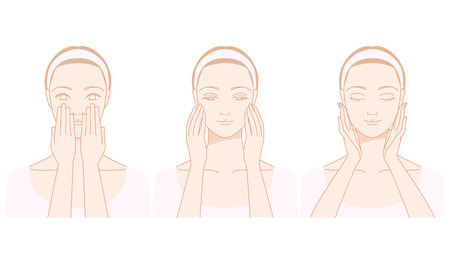1. Understanding Chemical Peels
Chemical peels are a popular skincare treatment designed to improve skin texture and appearance by removing the outermost layers of dead skin. They work by applying a chemical solution to the skin, which causes controlled exfoliation and stimulates new cell growth. Depending on the depth of penetration, chemical peels can be categorized into three main types: superficial, medium, and deep.
Types of Chemical Peels
Each type of chemical peel offers different benefits and is suitable for various skin concerns. The depth of the peel determines how much skin is removed and how long the recovery process takes.
| Type | Description | Common Ingredients | Recovery Time |
|---|---|---|---|
| Superficial Peel | Mildest type, targets the outer layer of skin for gentle exfoliation. | Alpha Hydroxy Acids (AHAs), Beta Hydroxy Acids (BHAs) | No downtime; mild redness may occur. |
| Medium Peel | Penetrates deeper into the skin to address fine lines, wrinkles, and pigmentation. | Trichloroacetic Acid (TCA), Glycolic Acid | A few days to a week; peeling and redness expected. |
| Deep Peel | The most intense type, targets deep wrinkles and significant sun damage. | Phenol | A few weeks; requires significant aftercare. |
How Chemical Peels Work
Chemical peels function by causing controlled damage to the skin, prompting it to heal and regenerate. This process removes dull, damaged skin cells while stimulating collagen production for firmer, smoother skin. The intensity of the peel determines how much improvement you’ll see—while superficial peels offer a refreshed look with minimal downtime, deeper peels provide more dramatic results but require longer recovery periods.
The Benefits of Chemical Peels
- Smoother and more even skin texture
- Diminished appearance of fine lines and wrinkles
- Lighter dark spots and hyperpigmentation
- Treatment for acne and acne scars
- A brighter, more youthful complexion
Is a Chemical Peel Right for You?
Chemical peels can benefit many skin types, but it’s important to choose the right type based on your specific concerns and skin sensitivity. Consulting with a skincare professional will help determine which peel suits your needs best.
2. The Science Behind Chemical Exfoliation
Chemical peels work by using specific acids to exfoliate the skin, removing dead cells, stimulating cell turnover, and promoting collagen production. These acids break down the bonds between dead skin cells, allowing them to shed more easily and revealing fresh, healthy skin underneath.
Understanding the Key Acids in Chemical Peels
The effectiveness of a chemical peel largely depends on the type of acid used. Each acid has unique properties that target different skin concerns. Here’s a breakdown of the most common acids found in chemical peels:
| Acid Type | How It Works | Best For |
|---|---|---|
| Alpha Hydroxy Acids (AHAs) | AHAs, such as glycolic and lactic acid, are water-soluble acids that gently dissolve dead skin cells on the surface, improving texture and radiance. | Dry or sun-damaged skin, dullness, fine lines |
| Beta Hydroxy Acids (BHAs) | BHAs, like salicylic acid, are oil-soluble and penetrate deeper into pores to remove excess sebum and unclog blackheads. | Oily, acne-prone skin, clogged pores |
| Trichloroacetic Acid (TCA) | TCA is a stronger peeling agent that penetrates deeper layers of the skin, effectively treating hyperpigmentation and deeper wrinkles. | Moderate to severe sun damage, pigmentation issues, deep wrinkles |
The Role of Cell Turnover in Skin Renewal
Our skin naturally sheds dead cells every 28 days, but this process slows down with age. Chemical exfoliation accelerates this turnover rate, helping to keep the complexion smooth and youthful. By encouraging faster renewal, these peels help fade dark spots, even out skin tone, and maintain a fresh appearance.
Boosting Collagen for Firmer Skin
Apart from exfoliation, chemical peels also stimulate collagen production. Collagen is essential for maintaining skin elasticity and firmness. As we age, collagen production decreases, leading to sagging and wrinkles. By promoting collagen synthesis through controlled exfoliation, chemical peels help improve skin structure over time.
Choosing the Right Chemical Peel for Your Skin Type
Selecting the right peel depends on your specific skin concerns and tolerance level. If youre unsure which type suits you best, consulting with a skincare professional can help determine the most effective option based on your needs.
![]()
3. Skin Benefits of Chemical Peels
Chemical peels offer a wide range of benefits for your skin, making them a popular choice for those looking to achieve a smoother, more youthful complexion. Whether you’re dealing with fine lines, uneven skin tone, or acne scars, chemical peels can help improve your overall skin health. Let’s explore some of the key benefits.
Reducing Fine Lines and Wrinkles
As we age, our skin’s natural cell turnover slows down, leading to the appearance of fine lines and wrinkles. Chemical peels work by removing dead skin cells and stimulating collagen production, which helps smooth out these signs of aging.
Improving Skin Tone and Texture
Uneven skin tone caused by sun damage, hyperpigmentation, or melasma can be improved with chemical peels. By exfoliating the top layers of skin, peels help reveal fresh, new skin underneath, giving you a brighter and more even complexion.
Addressing Acne Scars
If you struggle with acne scars, chemical peels can help fade them over time. Peels encourage new cell growth and collagen production, reducing the appearance of scars and leaving your skin looking smoother.
Enhancing Overall Skin Health
Chemical peels not only address specific concerns but also promote overall skin health. By removing built-up dead skin cells and unclogging pores, they help reduce breakouts and leave your skin feeling refreshed and rejuvenated.
Comparison of Chemical Peel Benefits
| Benefit | Description |
|---|---|
| Fine Line Reduction | Smooths wrinkles by increasing collagen production. |
| Even Skin Tone | Diminishes dark spots and hyperpigmentation. |
| Acne Scar Improvement | Fades post-acne marks by encouraging new cell growth. |
| Pore Cleansing | Keeps pores clear to reduce breakouts. |
| Smoother Texture | Makes skin feel softer and more refined. |
Chemical peels are a great way to refresh your skin and address multiple concerns at once. With consistent treatments, you’ll notice a healthier, glowing complexion that looks and feels revitalized.
4. What to Expect During and After a Chemical Peel
Getting a chemical peel can be an exciting step toward smoother, more radiant skin. However, it’s important to know what to expect during the process and how your skin will react afterward. Here’s a breakdown of what happens during the treatment, the recovery period, and potential side effects.
What Happens During a Chemical Peel?
The procedure typically follows these steps:
- Cleansing: Your skin is thoroughly cleansed to remove any dirt, oil, or makeup.
- Application: The chemical solution is carefully applied to your skin. You may feel a slight tingling or warmth.
- Waiting Period: The solution remains on your skin for a few minutes, depending on the type of peel.
- Neutralization (if needed): Some peels require neutralization, while others self-neutralize over time.
- Post-Treatment Care: A soothing moisturizer and sunscreen are applied before you leave.
Recovery Time: How Long Does It Take?
Your recovery time depends on the depth of the chemical peel:
| Chemical Peel Type | Expected Recovery Time |
|---|---|
| Light Peel | A few days; mild redness and slight peeling. |
| Medium Peel | Around 7–10 days; noticeable peeling and redness. |
| Deep Peel | Several weeks; significant peeling, redness, and sensitivity. |
Side Effects: What to Expect Post-Treatment
Mild side effects are normal after a chemical peel. Here are some common reactions:
- Redness: Your skin may appear sunburned for a few days.
- Peeling: Skin will start to flake off as part of the renewal process.
- Tightness: Your skin might feel dry or tight temporarily.
- Sensitivity: Avoid direct sunlight, as your skin will be more sensitive than usual.
Caring for Your Skin After a Chemical Peel
The right aftercare can make a huge difference in your healing process. Follow these tips for best results:
- Mild Cleansing: Use a gentle cleanser to avoid irritation.
- No Picking or Scrubbing: Let your skin shed naturally—do not peel off flakes manually.
- Moisurize Frequently: Hydrate with a mild, non-irritating moisturizer.
- Sunscreen is Essential: Protect your new skin with SPF 30 or higher daily.
A chemical peel can do wonders for your skin when properly cared for. By knowing what to expect during and after treatment, you’ll be well-prepared for a smooth recovery and glowing results!
5. How to Choose the Right Chemical Peel for Your Skin
Selecting the right chemical peel is essential to achieving the best results while keeping your skin healthy and protected. Different peels target different concerns, so understanding your skin type, goals, and sensitivity level will help you make an informed decision.
Understanding Your Skin Type
Your skin type plays a crucial role in determining which chemical peel will work best for you. Here’s a quick guide:
| Skin Type | Recommended Peels |
|---|---|
| Oily/Acne-Prone | Salicylic Acid Peel, Jessner’s Peel |
| Dry/Sensitive | Lactic Acid Peel, Mandelic Acid Peel |
| Combination | AHA Peels (Glycolic or Lactic Acid) |
| Mature/Aging | TCA Peel, Retinol Peel |
| Hyperpigmentation | Kojic Acid Peel, Glycolic Acid Peel |
Selecting a Peel Based on Your Concerns and Goals
If youre looking to address specific concerns such as acne scars, fine lines, or sun damage, its important to choose a peel that targets those issues effectively:
- AHA Peels (Glycolic/Lactic): Best for gentle exfoliation, brightening dull skin, and improving overall texture.
- BHA Peels (Salicylic): Ideal for oily and acne-prone skin as it penetrates deep into pores to clear breakouts.
- TCA Peels: Effective for deeper wrinkles, acne scars, and pigmentation but requires more downtime.
- Kojic Acid Peels: Great for reducing dark spots and evening out skin tone.
- Mandelic Acid Peels: A milder option for sensitive skin types looking for anti-aging benefits.
The Importance of Consulting a Skincare Professional
Chemical peels can vary in strength from mild to deep, and choosing the wrong one could lead to irritation or damage. That’s why consulting with a dermatologist or licensed skincare professional is highly recommended. They can assess your skin type, discuss your concerns, and recommend the most suitable peel based on your needs.
Questions to Ask Your Skincare Professional:
- “What type of peel is best for my skin concerns?”
- “How many sessions will I need to see results?”
- “What should I expect during the recovery process?”
- “Are there any side effects I should be aware of?”
- “How should I care for my skin after the peel?”
A Personalized Approach to Chemical Peels
The right chemical peel can transform your skin when chosen carefully. Whether you’re looking for gentle exfoliation or deeper resurfacing, understanding your options and seeking professional guidance will ensure safe and effective results tailored to your unique skin needs.


